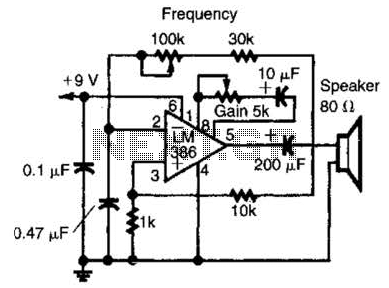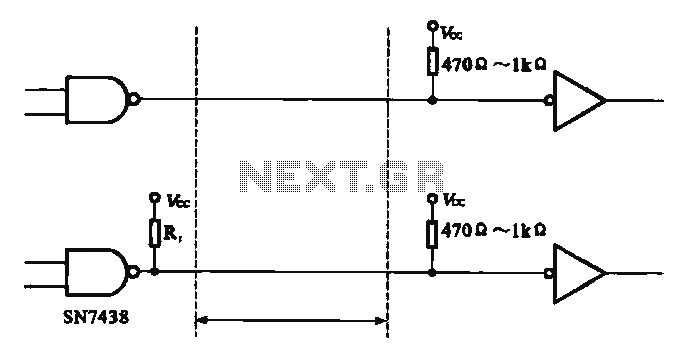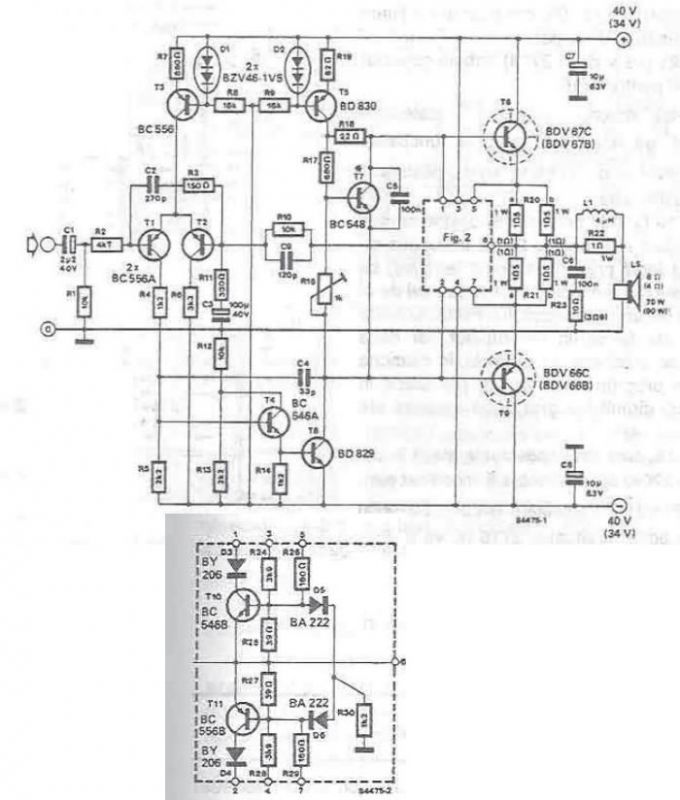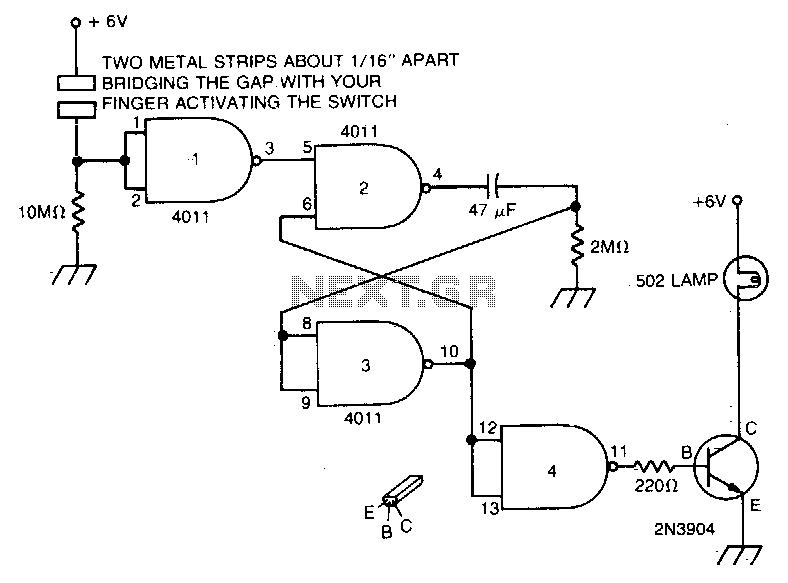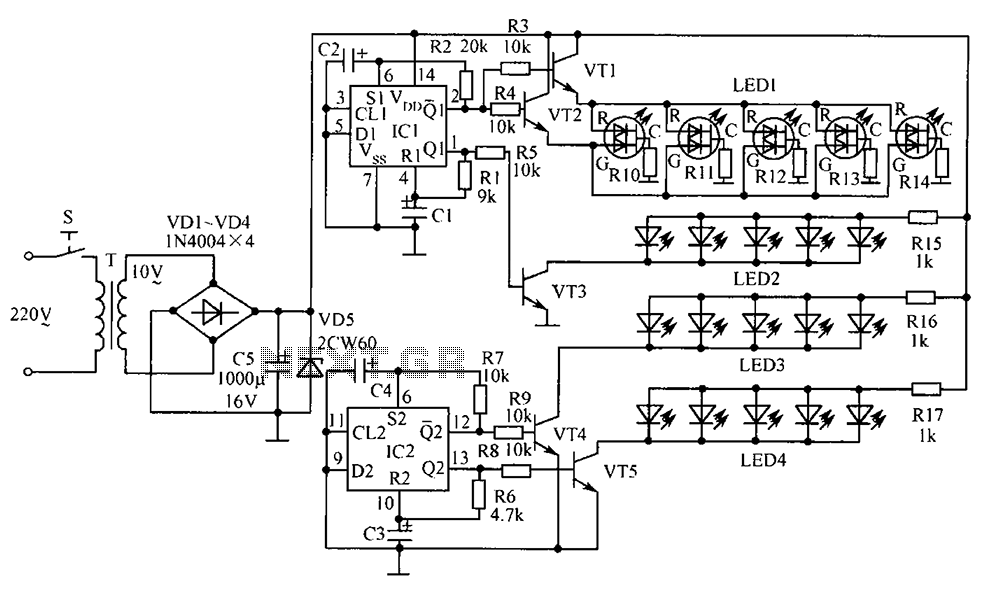
Multivoltage Power Supply Circuit

This dual-polarity, multivoltage power supply can be constructed with a minimal investment. The circuit utilizes 78XX and 79XX series voltage regulators, four 3-A diodes, a 24-30 V, 2-6 A transformer, and eight filter capacitors.
The described dual-polarity, multivoltage power supply is a versatile circuit suitable for various electronic applications requiring both positive and negative voltage outputs. The core components include the 78XX series for positive voltage regulation and the 79XX series for negative voltage regulation. These linear voltage regulators are well-known for their reliability and ease of use, providing stable output voltages with minimal ripple.
The power supply begins with a transformer rated between 24 to 30 volts and capable of delivering 2 to 6 amperes. This transformer steps down the mains voltage to a lower AC voltage suitable for the voltage regulators. The output from the transformer is then rectified using four 3-A diodes arranged in a full-wave bridge configuration. This rectification process converts the AC voltage to pulsating DC voltage, which is essential for the voltage regulators to operate effectively.
Following the rectification, eight filter capacitors are employed to smooth out the pulsating DC voltage. These capacitors are critical in reducing voltage ripple and ensuring a stable DC output. The values of these capacitors should be chosen based on the expected load and the desired level of ripple voltage.
The output from the positive voltage regulator (78XX) provides a regulated positive voltage, while the negative voltage regulator (79XX) supplies a regulated negative voltage. By selecting the appropriate models from the 78XX and 79XX series, the output voltages can be tailored to meet specific requirements, such as ±5V, ±12V, or ±15V.
This power supply design is particularly advantageous for projects requiring dual-polarity outputs, such as operational amplifier circuits, analog signal processing, and various digital circuits. The simplicity of the design, combined with the availability of components, makes it an excellent choice for hobbyists and professionals alike. Proper heat sinking for the voltage regulators may be necessary to prevent thermal overload, especially under higher load conditions. This dual-polarity, multivoltage power supply can be built for a very small investment. The circuit is built around 78XX and 79XX series i-A voltage regulators, four 3-A diodes, a 24-30-V 2-6-A transformer, and eight filter capacitors.
The described dual-polarity, multivoltage power supply is a versatile circuit suitable for various electronic applications requiring both positive and negative voltage outputs. The core components include the 78XX series for positive voltage regulation and the 79XX series for negative voltage regulation. These linear voltage regulators are well-known for their reliability and ease of use, providing stable output voltages with minimal ripple.
The power supply begins with a transformer rated between 24 to 30 volts and capable of delivering 2 to 6 amperes. This transformer steps down the mains voltage to a lower AC voltage suitable for the voltage regulators. The output from the transformer is then rectified using four 3-A diodes arranged in a full-wave bridge configuration. This rectification process converts the AC voltage to pulsating DC voltage, which is essential for the voltage regulators to operate effectively.
Following the rectification, eight filter capacitors are employed to smooth out the pulsating DC voltage. These capacitors are critical in reducing voltage ripple and ensuring a stable DC output. The values of these capacitors should be chosen based on the expected load and the desired level of ripple voltage.
The output from the positive voltage regulator (78XX) provides a regulated positive voltage, while the negative voltage regulator (79XX) supplies a regulated negative voltage. By selecting the appropriate models from the 78XX and 79XX series, the output voltages can be tailored to meet specific requirements, such as ±5V, ±12V, or ±15V.
This power supply design is particularly advantageous for projects requiring dual-polarity outputs, such as operational amplifier circuits, analog signal processing, and various digital circuits. The simplicity of the design, combined with the availability of components, makes it an excellent choice for hobbyists and professionals alike. Proper heat sinking for the voltage regulators may be necessary to prevent thermal overload, especially under higher load conditions. This dual-polarity, multivoltage power supply can be built for a very small investment. The circuit is built around 78XX and 79XX series i-A voltage regulators, four 3-A diodes, a 24-30-V 2-6-A transformer, and eight filter capacitors.
